U.S. Department of Transportation
Federal Highway Administration
1200 New Jersey Avenue, SE
Washington, DC 20590
202-366-4000
Federal Highway Administration Research and Technology
Coordinating, Developing, and Delivering Highway Transportation Innovations
| PRESENTATION |
| This presentation is an archived publication and may contain dated technical, contact, and link information |
|
| Publication Number: N/A Date: January 2014 |
Publication Date: January 2014
|
PDF files can be viewed with the Acrobat® Reader®
Robert Zobel, Ph.D., P.E. |
Sue Lane, P.E. |
Hamid Ghasemi, Ph.D. |
Tom Saad, P.E. |
| Corrosion | Delamination | Concrete Degradation |
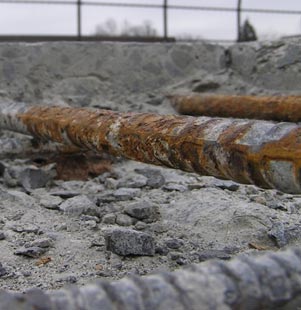 |
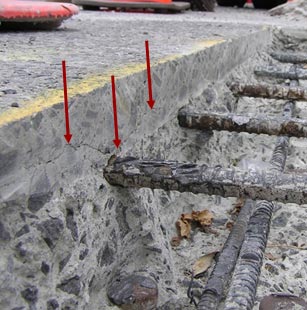 |
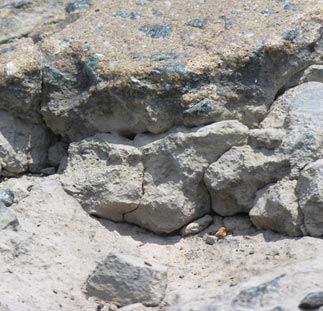 |
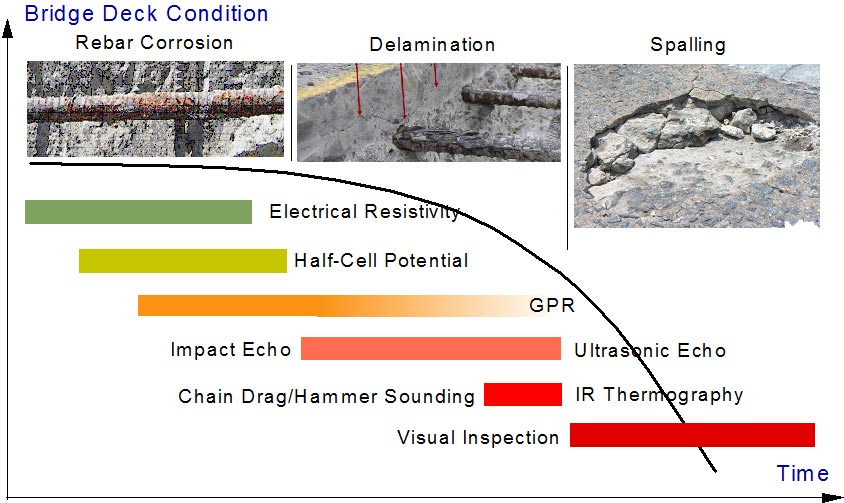

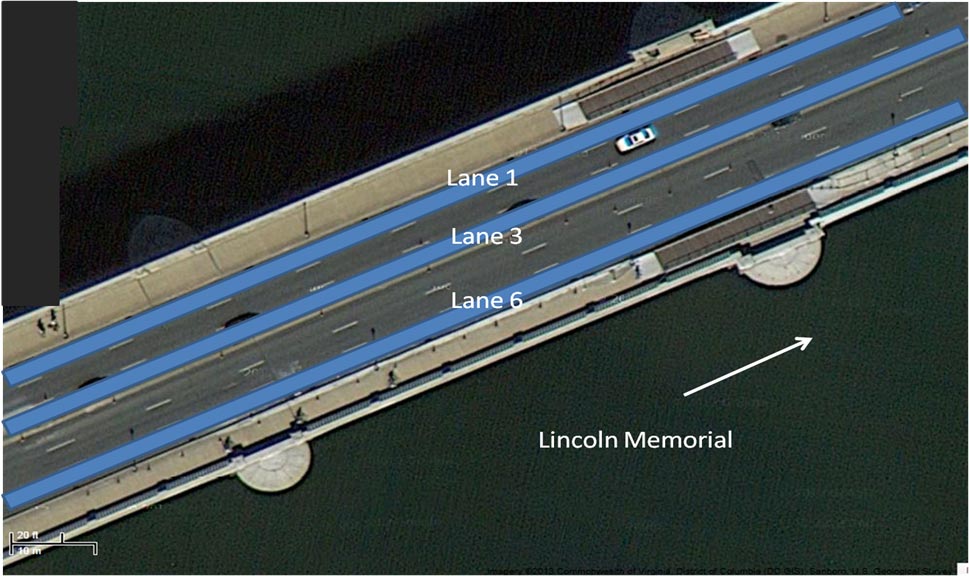
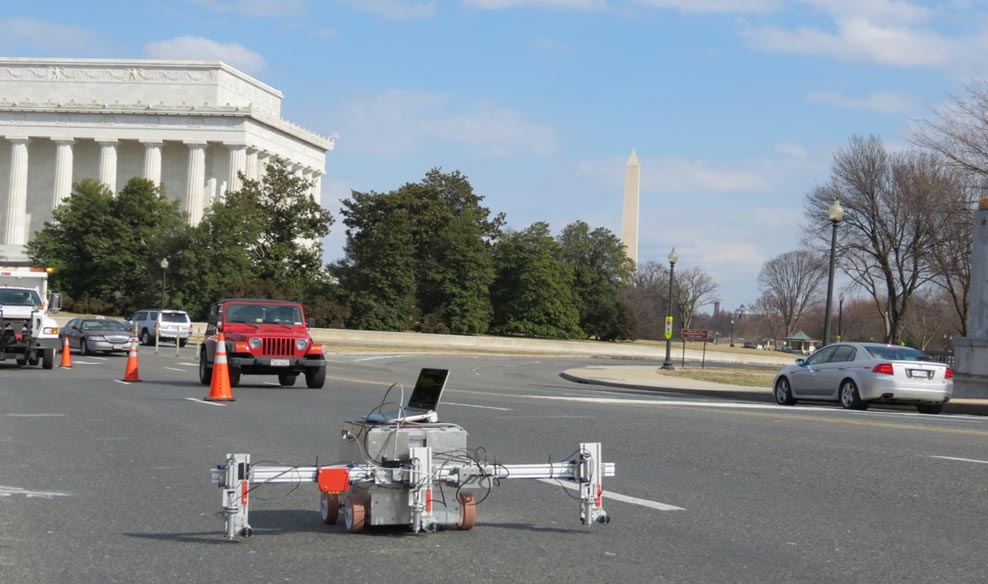
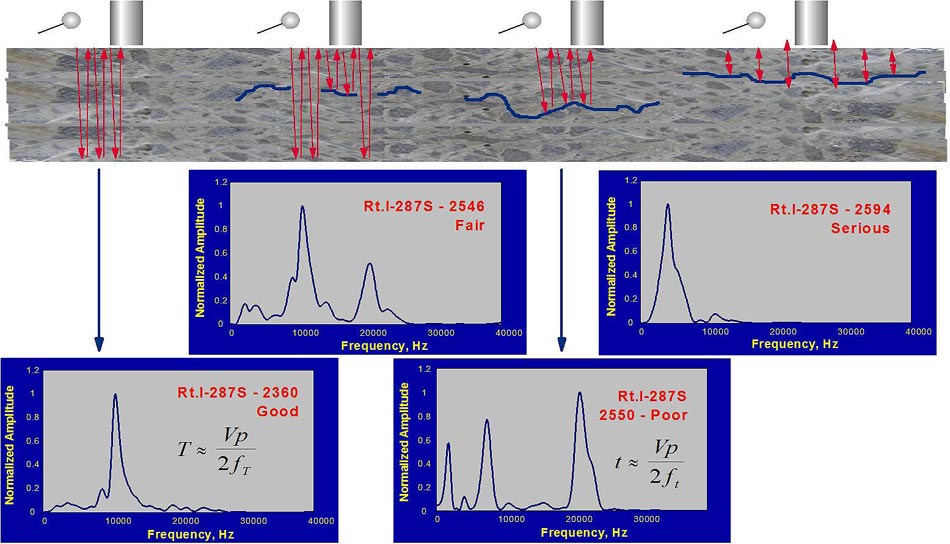
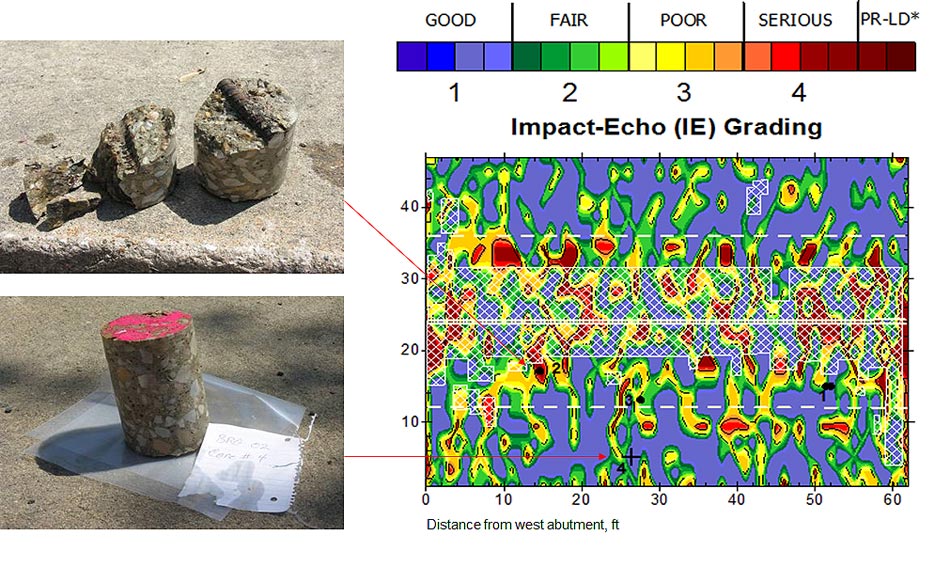
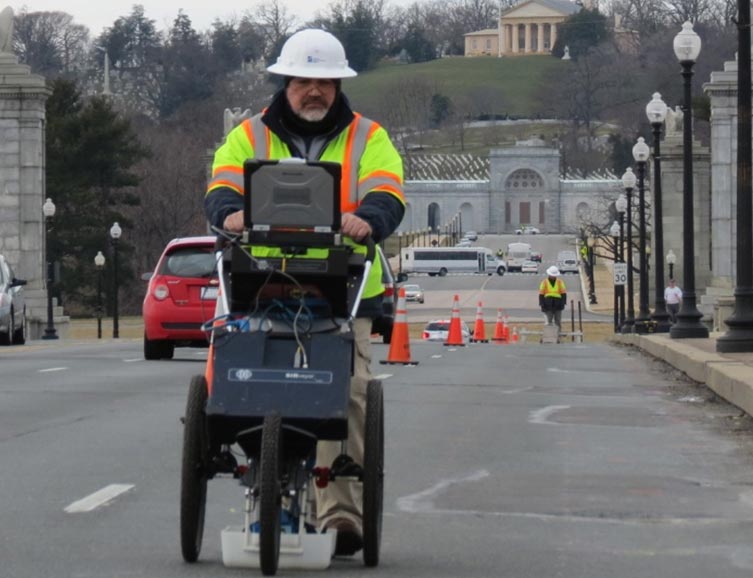
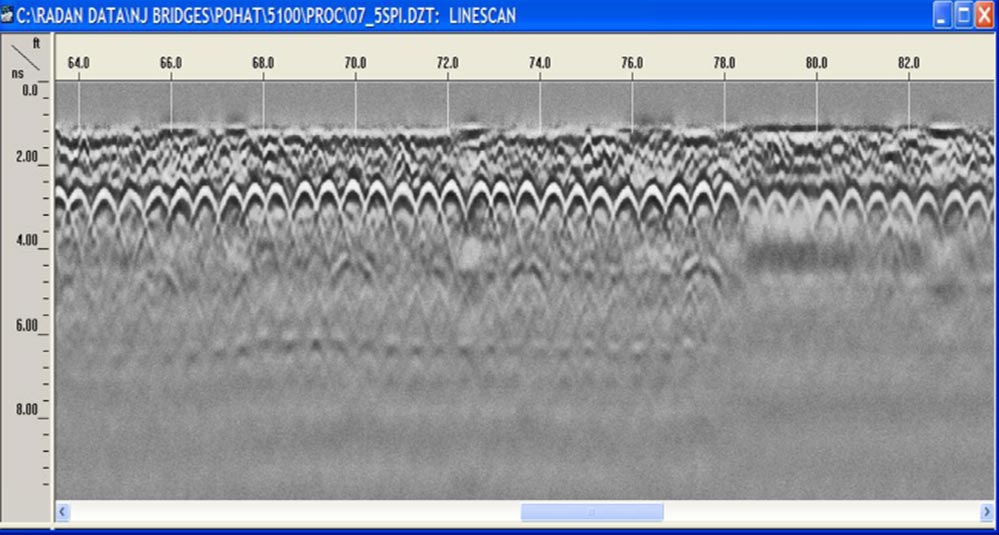
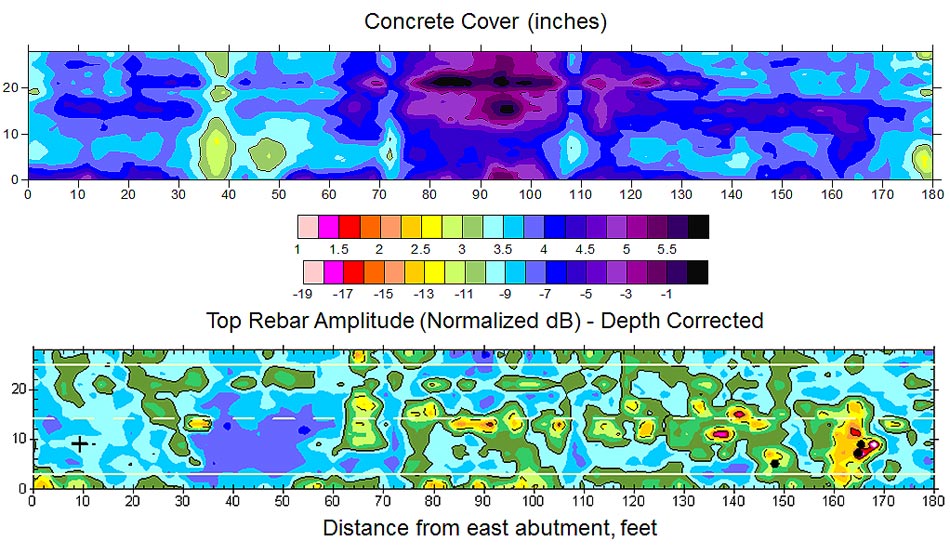
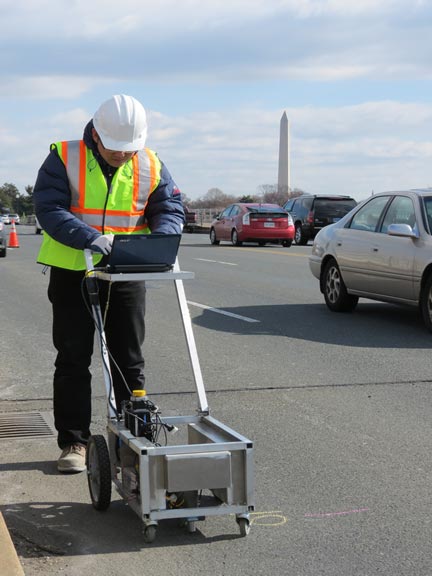 |
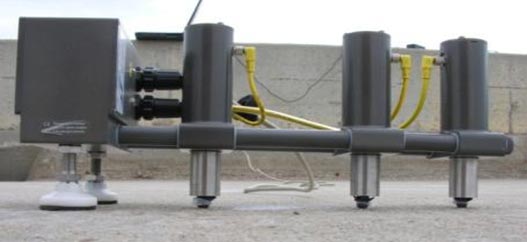 |
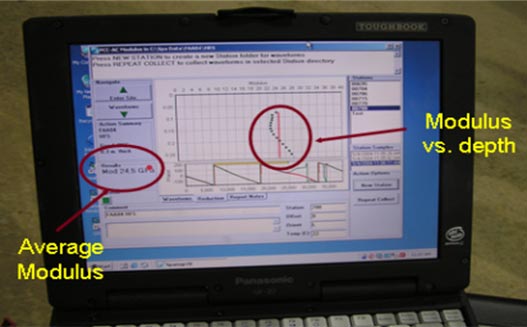 |
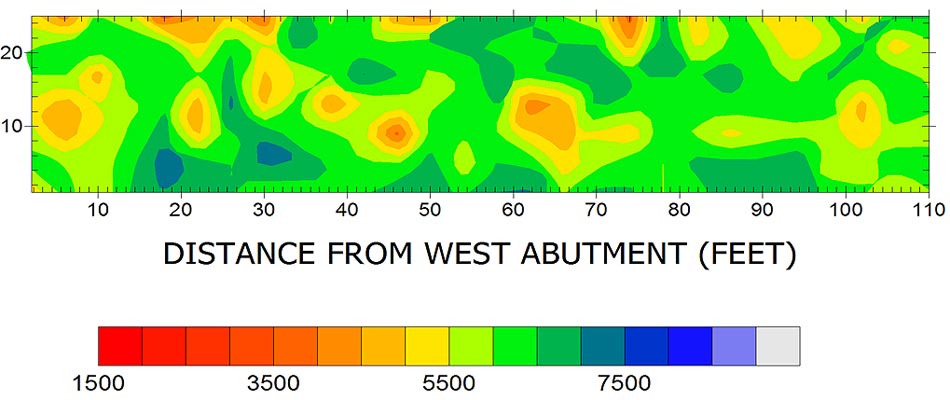
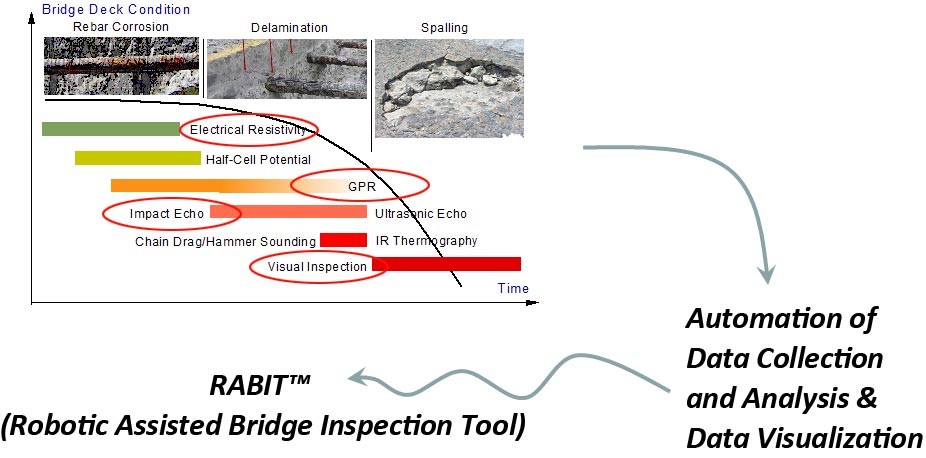
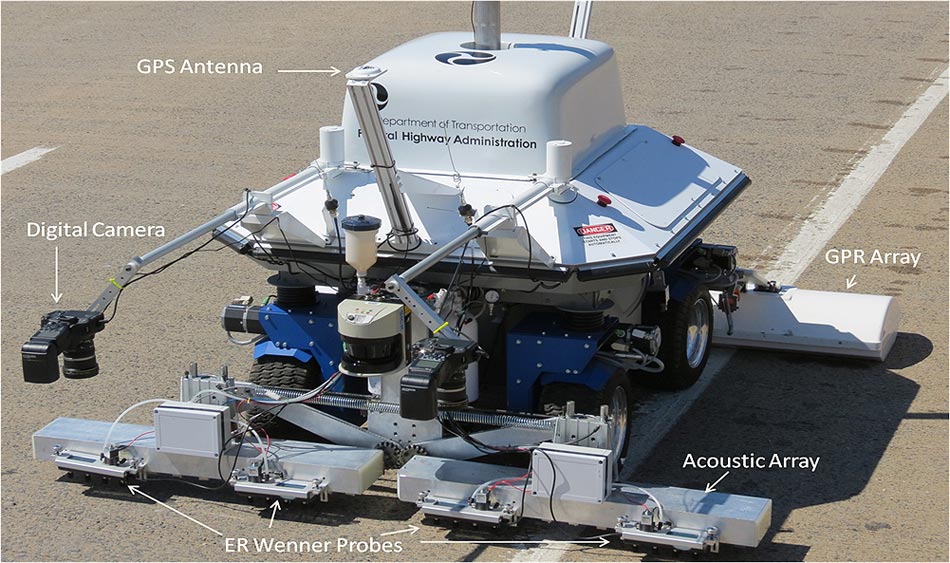
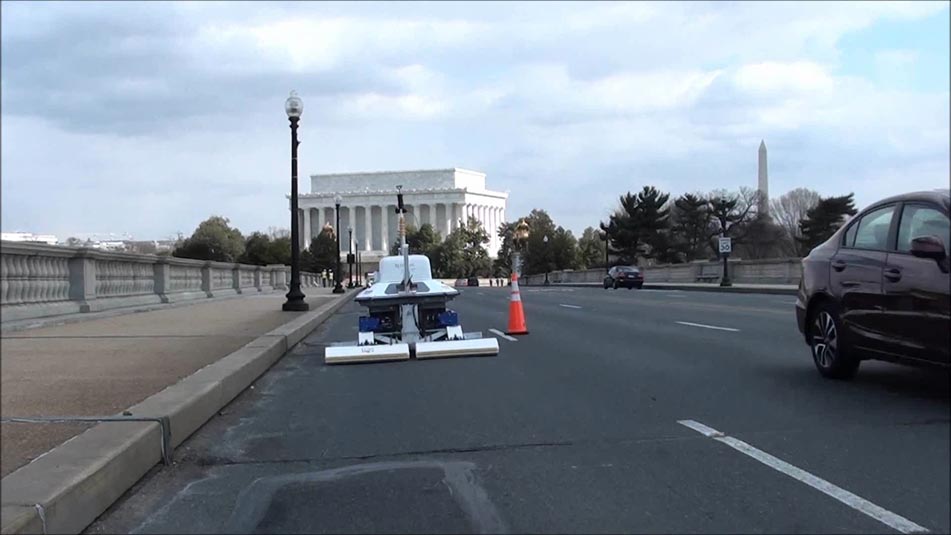
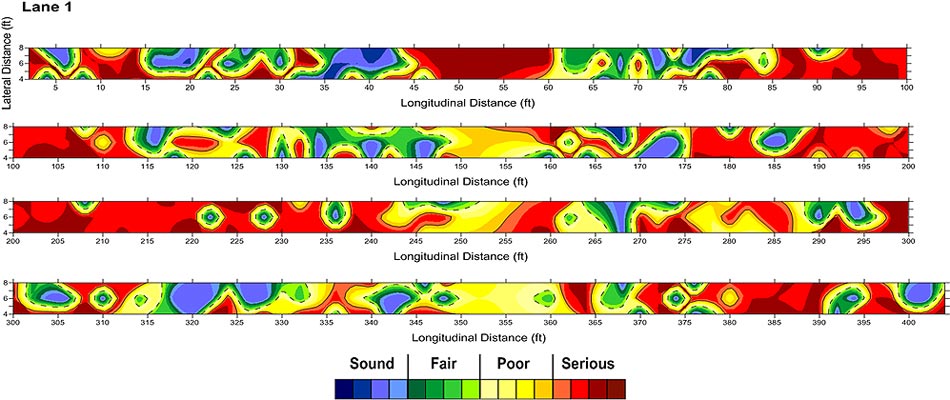
Because of the asphalt overlay, some detection is a result of asphalt debonding, or disintegration of near surface concrete.
Grading
|
Good |
|
- No delamination/debonding detected |
|
Fair/Poor |
|
- Incipient delamination |
|
Serious |
|
- Fully delaminated or debonded |
| Lane 1 | Lane 3 | Lane 6 | |||||
| Arlington | Lincoln | Arlington | Lincoln | Arlington | Lincoln | ||
| Impact Echo |
Good | 9% | 18% | 15% | 19% | 21% | 19% |
| Fair/Poor | 19% | 23.50% | 23.50% | 29% | 52% | 47% | |
| Serious | 72% | 58.50% | 61.50% | 52% | 27% | 34% | |
Composite modulus
Grading
|
Good |
|
- > 3000 ksi |
|
Fair/Poor |
|
- 2000-3000 ksi |
|
Serious |
|
- 2000-3000 ksi |
| Lane 1 | Lane 3 | Lane 6 | |||||
| Arlington | Lincoln | Arlington | Lincoln | Arlington | Lincoln | ||
| USW | Good | 35% | 7% | 4% | |||
| Fair/Poor | 34% | 59% | 17% | ||||
| Serious | 31% | 34% | 79% | ||||
Qualitative assessment based on the attenuation of electromagnetic waves on the top rebar level.
| Lane 1 | Lane 3 | Lane 6 | |||||
| Arlington | Lincoln | Arlington | Lincoln | Arlington | Lincoln | ||
| GPR | Good | 8% | 11% | 11% | |||
| Fair/Poor | 67% | 62% | 72% | ||||
| Serious | 25% | 27% | 17% | ||||
Based on the IE survey, almost eighty percent of the deck is delaminated or debonded. A high percentage of the deck, varying from about 30 percent on the Lane 6 side to more than 60 percent on the Lane 1 side, is already in a serious or severe condition. The delamination is more prevalent and more severe on the Lane 1 side and the delamination conditions are slightly less severe going towards Lane 6
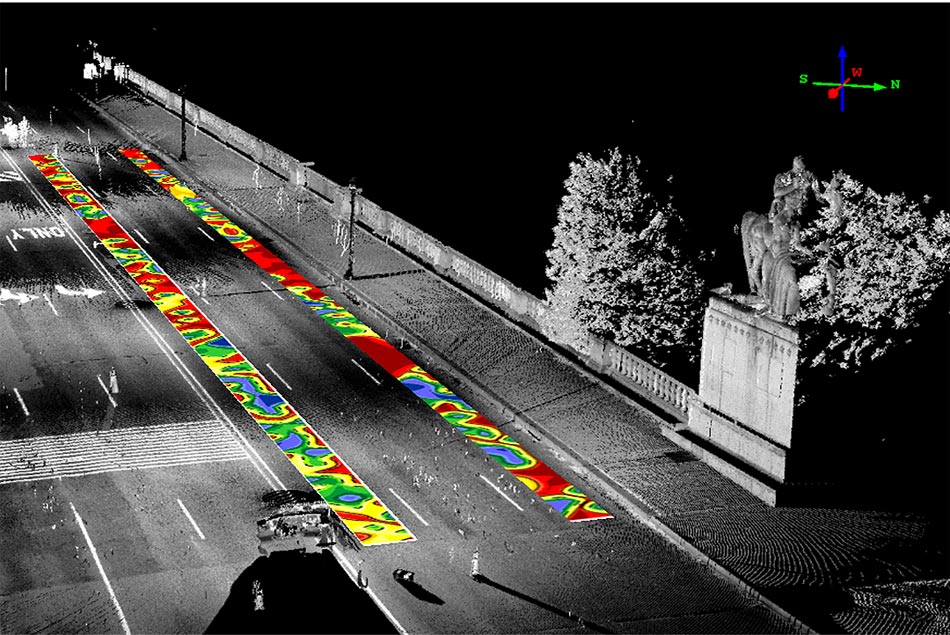
Impact Echo Data Superimposed on LiDAR Image
The concrete modulus for most of the deck, about 80 percent, is less than 3000 ksi. The modulus is on the low side of typical values of concrete modulus in bridge decks, which in most cases is measured between 4000 and 6000 ksi.

Impact Echo Data Superimposed on LiDAR Image
The GPR survey results also describe a significant percentage of the deck area to be deteriorated or/and highly corrosive. Only 10 percent of the deck area according to the GPR survey can be described as good.

Impact Echo Data Superimposed on LiDAR Image

Impact Echo Data Superimposed on LiDAR Image